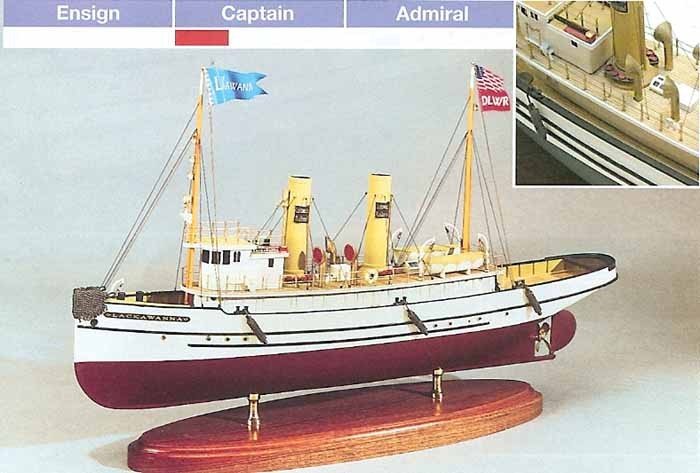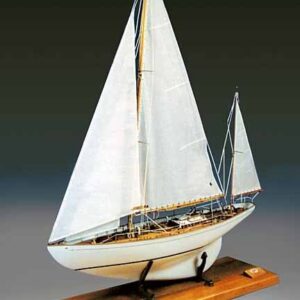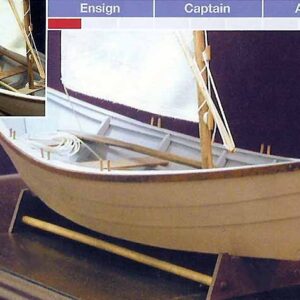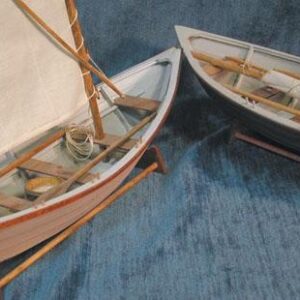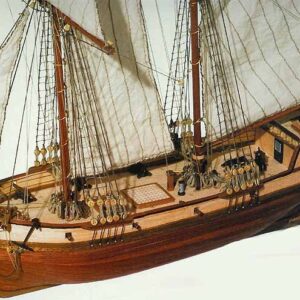$295.00
Blue Jackets Lackawanna represents the state of the art in kit manufacturing
From the pre-carved basswood hull to the specially designed photo-etched brass pilothouse and deck plates, cast brass ventilators and propeller, accuracy and quality have been the primary concerns. With a 20 page instruction book and over 40 fine Britannia metal castings, wood, rigging cord and decorative flags, this kit will let you produce one of the most interesting small steamer models we have ever seen.
Length 17-1/2″ / Height 9-1/4″ / Scale 1/8″=1′
Please note that these kits may not be in stock when ordering. It may take an additional week before we ship these items, if you are in a hurry please contact us before ordering
Have questions about this item or any of our other products? Contact us
Looking for a community of Model Ship Builders? Check out this forum
Out of stock
The Lackawanna worked the East Coast, pulling barges of coal from Pennsylvania to the industrial centers to the south and the northeast. She was painted white to show off the clean burning qualities of the hard anthracite coal she burned, and her yacht-like appearance made her stand out among her fellow workboats.
The Lackawanna was a formidable ship that sailed the seas with grace and power. It was a steam-powered vessel, built in the mid-19th century by the New York Navy Yard. The ship was named after the Lackawanna River in Pennsylvania, paying homage to the state’s rich history of shipbuilding and maritime trade.
The Lackawanna was a marvel of engineering and design, measuring over 200 feet in length and weighing 1,400 tons. Its sleek and sturdy hull was made of iron, allowing it to withstand the rough waters of the Atlantic Ocean. The ship’s powerful steam engines and two paddlewheels gave it a top speed of 12 knots, making it one of the fastest ships of its time.
The ship was equipped with an impressive arsenal of weaponry, including 11 guns ranging from 32-pounders to 100-pounders. It also had a rotating turret on its main deck, which housed two powerful 11-inch Dahlgren guns. This made the Lackawanna a formidable opponent in battle and a vital asset to the United States Navy during the Civil War.
Aside from its military capabilities, the Lackawanna was also well-equipped for long voyages. It had spacious living quarters for its crew of 200 men, including a captain’s quarters, officer’s quarters, and enlisted men’s mess. The ship also had a well-stocked galley and a large storage area for supplies, ensuring that its crew could withstand long periods at sea.
One of the most unique features of the Lackawanna was its ability to convert from a steam-powered vessel to a sail-powered ship. This allowed it to conserve fuel and adapt to different weather conditions, making it a versatile and reliable ship.
The Lackawanna served in various missions and battles during its time in service. It played a crucial role in the capture of Fort Fisher during the Civil War and also participated in the opening of Japan to Western trade in the late 1800s.
Sadly, the Lackawanna met its demise in 1883 when it ran aground off the coast of Venezuela during a heavy storm. Despite efforts to tow it to safety, the ship was irreparably damaged and sank, taking with it a piece of American naval history.
Today, the Lackawanna remains a symbol of American ingenuity and naval prowess. Its legacy lives on through historical records and artifacts, reminding us of the brave men who sailed on its decks and the important role it played in shaping our nation’s history.
Related products
-
- Add to cart
- $330.00
Dorade by Amati
-
- Add to cart
- $240.00
We’re Here by Bluejacket
-
- Out of Stock
- Read more
- $124.99
Albatros (1:100 Scale)
-
